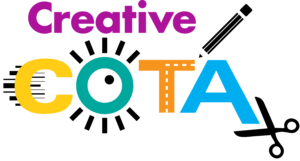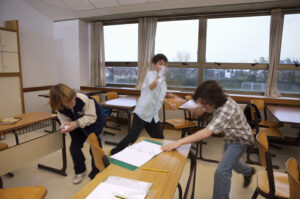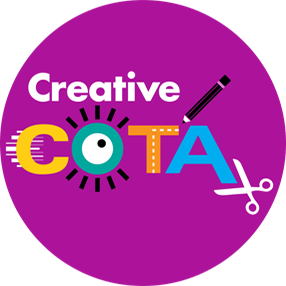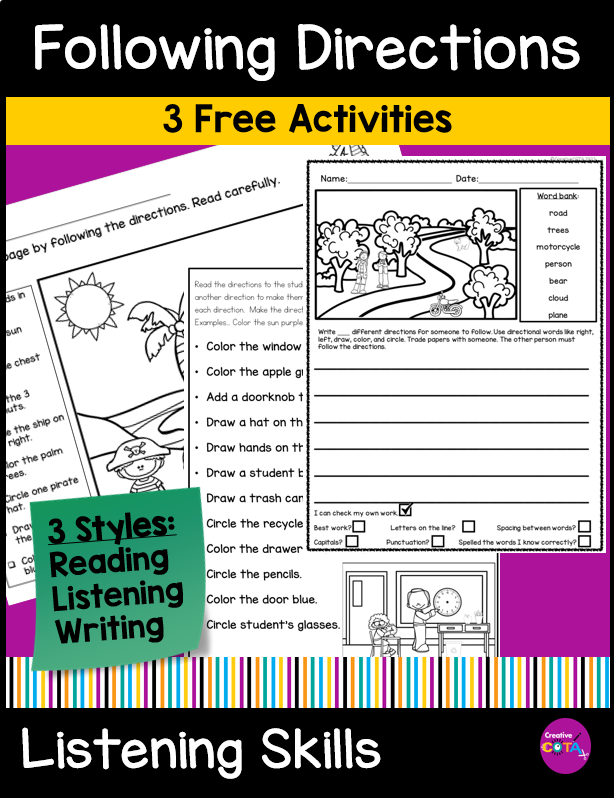
This post contains affiliate links. If you use the link and make a purchase I will receive a small fee at no cost to you.
As February begins, teachers and occupational therapists seek engaging ways to keep students focused and actively involved in learning. These February variety packs of worksheets and activities isn’t just a resource—it’s a gateway to an inclusive approach, integrating academic skills with occupational therapy principles. Activities for Groundhog Day, Chinese New Year, Presidents Day, and Valentine’s Day are included.
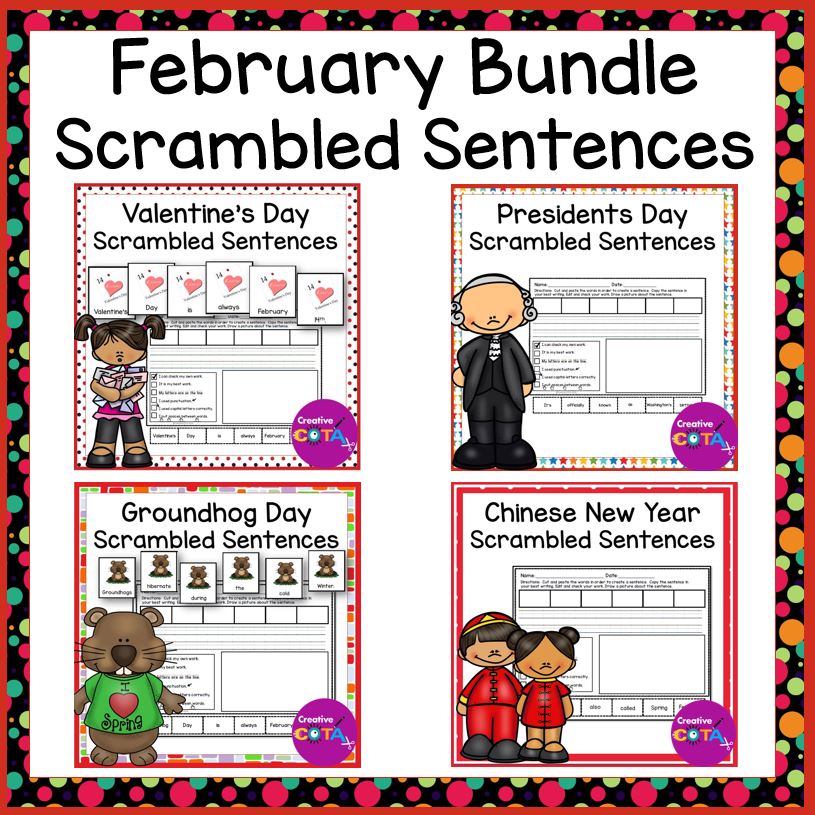
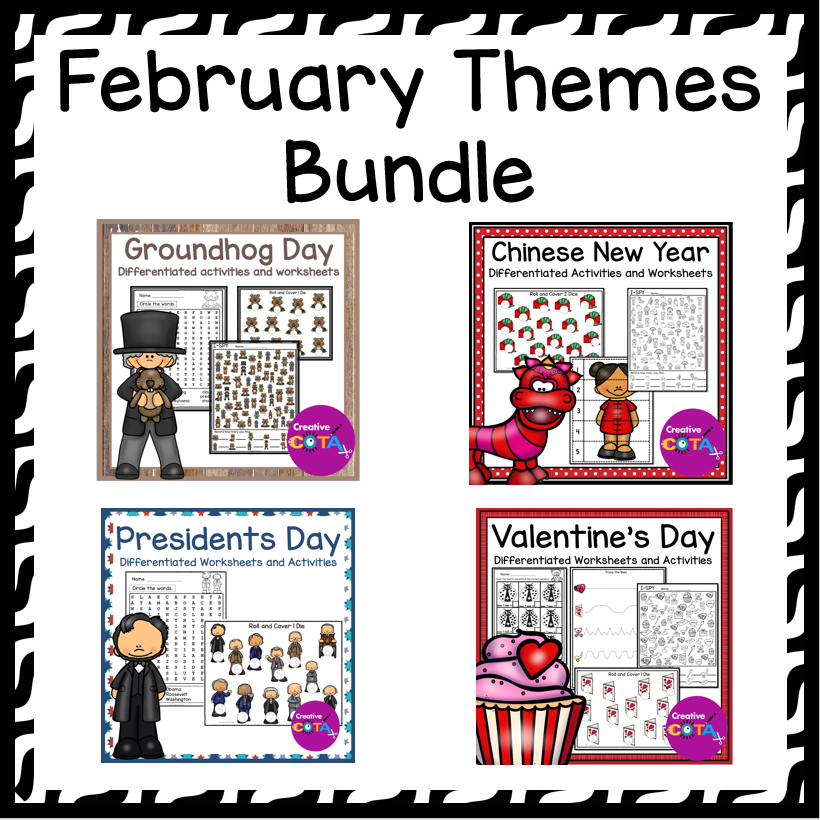
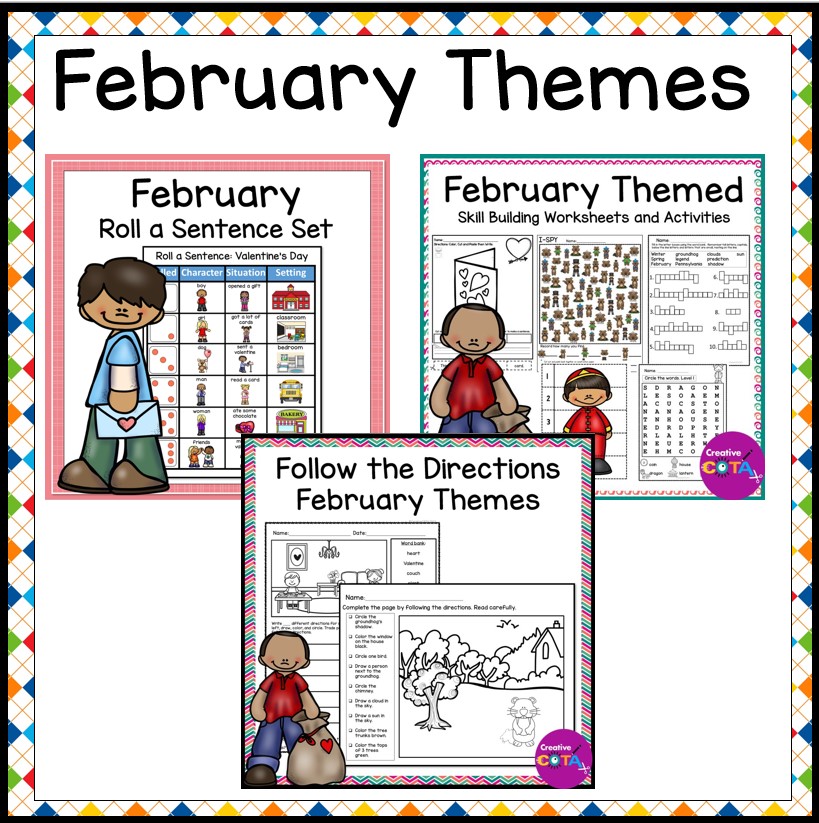
Fine motor activities: Embedded within the variety pack are fine motor activities like tracing prewriting sheets, follow the directions coloring pages and letter box handwriting. These activities aren’t just about forming letters; they’re about refining hand control and precision, perfect for academic success.
Gross motor activities: Included in these themed worksheets and activities, gross motor exercises are included. From sequencing writing activities to interactive gross motor tasks, students engage in whole-body movements, fostering coordination and spatial awareness.
Visual perception and writing: Find the Same visual perception tasks and I-spy math worksheets introduce sensory challenges, promoting visual discrimination and attention to detail. Meanwhile, the variety pack’s writing prompts and scrambled sentence activities form a bridge to social-emotional learning. These tasks encourage self-expression, creativity, and effective communication, and emotional intelligence.
Math skills: Counting worksheets, roll and cover number exercises, and cut-and-paste number puzzles add academic skills into the mix. While students explore math concepts, they’re also working on their fine motor skills—bridging the gap between academics and occupational therapy seamlessly.
Social emotional learning: Help your students improve their social-emotional intelligence with emotions bingo games. Great for school counseling lessons, classroom management, and occupational therapy social emotional learning activities.
When can you use them?
Designed for writing centers, math stations, and even emergency sub plans, this February variety pack is a versatile asset. But it goes beyond convenience. It caters to occupational therapy goals, providing activities that are not only academically enriching but also therapeutic in nature.
In the world of occupational therapy, where every activity is purposeful, this February variety pack has so many engaging activities for you and your students. As students delve into tracing prewriting sheets and embark on gross motor adventures, they’re not just learning—they’re thriving, building a foundation for success that extends beyond the classroom.
Low Prep Crafts for February
- Heart-Themed Lacing Cards: Create heart-shaped lacing cards using cardstock or felt. Punch holes around the edges, and provide students with shoelaces or yarn to thread through the holes, enhancing fine motor control.
- Valentine’s Day Scissor Practice: Offer red, pink and white paper for snipping and cutting. Students can practice their scissor skills by cutting along lines, creating heart-shaped patterns or intricate designs.
- Tweezer Challenge: Use tweezers or strawberry hullers (my personal favorite) to sort small, Valentine-themed beads or erasers. Students can practice picking up these items, refining their pincer grasp. Use a muffin tin for students to sort into.
- Heart Sticker Collage: Prepare sheets with heart outlines, and let students fill them in using small stickers. This activity encourages precision and finger dexterity as they carefully place each sticker within the heart shape.
- Valentine’s Day Beading: Offer beads in heart shapes or red and pink colors. Students can practice threading these beads onto strings, promoting eye-hand coordination and refining their pincer grasp.
- Valentine’s Day Button Sorting: Provide students with a mix of colored buttons. Ask them to sort the buttons by color into heart-shaped containers, refining their pincer grasp and promoting visual discrimination.
- Chinese Lantern Craft: Create simple Chinese lanterns using red construction paper. Folding, cutting, and gluing the paper together promotes fine motor skills. Add additional motor challenges by allowing students to decorate the lanterns with glitter, stickers, or markers.
- Cherry Blossom Tree Finger Painting: Draw a cherry blossom tree with simple brown lines. Students can use their fingertips in craft ink to create delicate pink cherry blossoms on branches. This activity engages tactile senses, fine motor coordination, and encourages creativity.
- Dragon Puppet Craft: Construct dragon puppets using paper plates, craft sticks, and colored paper. Assembling the puppet involves cutting, gluing, and decorating, promoting fine motor skills. Once completed, students can engage in imaginative play, manipulating the puppet with their fingers.
- Paper Fan Decorating: Decorate paper fans, a traditional Chinese craft, with colorful patterns. Folding the paper into a fan shape enhances fine motor coordination. Students can further refine their skills by using markers, stickers, or stamps to create intricate designs on the unfolded fan.
- Chinese Zodiac Animal Masks: Explore the Chinese zodiac by creating animal masks associated with each zodiac sign. Cutting out the mask shape, decorating, and adding features like ears or whiskers involve fine motor skills. This activity can be adapted for various skill levels, making it suitable for occupational therapy sessions.
- Chinese New Year Sticker Sort: Draw a grid on white paper for the correct number or stickers. Place one sticker in each box. Copy several pages in color and have students stick on the matching stickers.
- Groundhog Day Shadow Matching: Prepare a set of groundhog and shadow pairs on cards. Students can match the groundhog to its corresponding shadow, promoting visual perception and discrimination skills. This low-prep activity can be easily adapted to different difficulty levels by adjusting the number of pairs. Check out these shadow matching activities in my TPT store.
- Burrow Building with Playdough: Set up a burrow-building station using playdough. Students can roll, flatten, and shape the playdough to create underground burrows for groundhogs. This activity engages fine motor skills, hand strength, and creativity.
- Groundhog Day Puzzles: Print and cut out images related to Groundhog Day, such as groundhogs, shadows, and weather symbols. Students can cut up then assemble these images into simple puzzles, fostering visual-motor integration and problem-solving skills. There are several styles for Chinese New Year, Valentine’s, and Groundhog Day in the February-themed bundle.
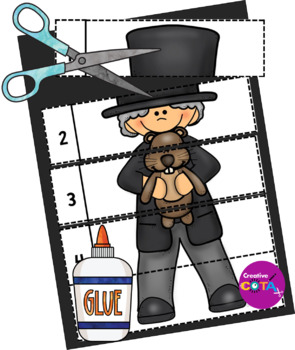
February Occupational Therapy Freebies
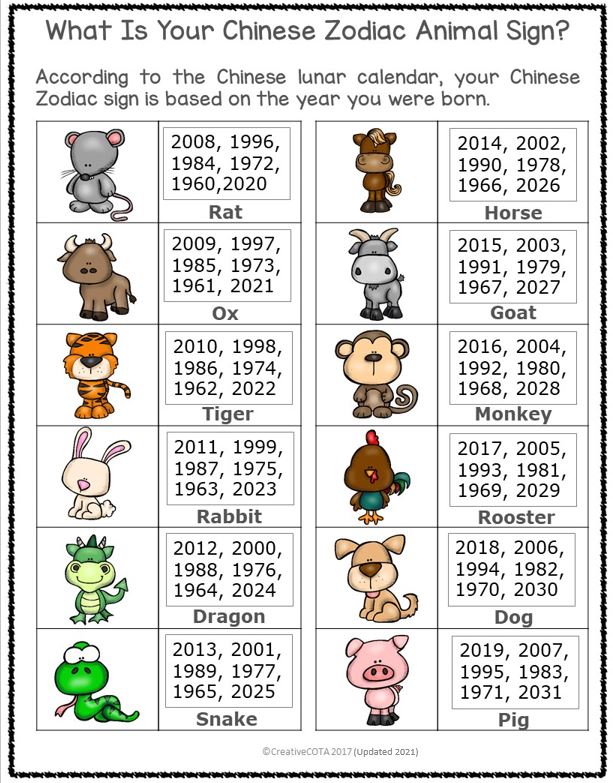
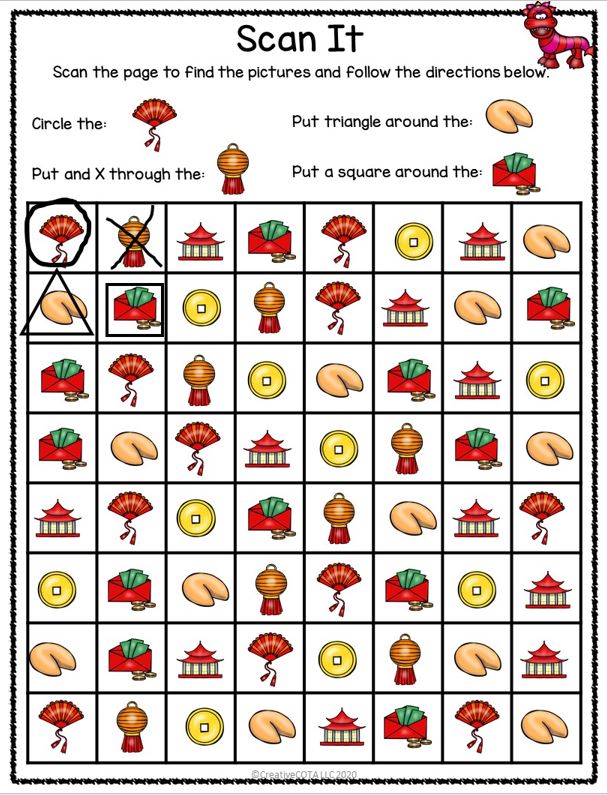
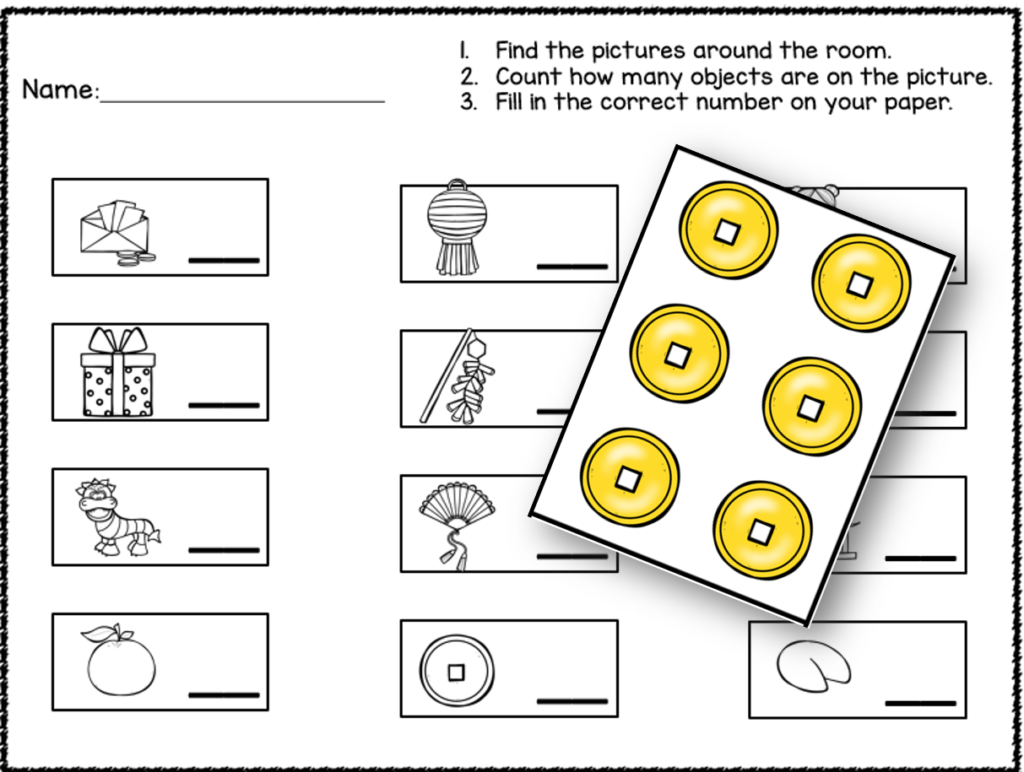
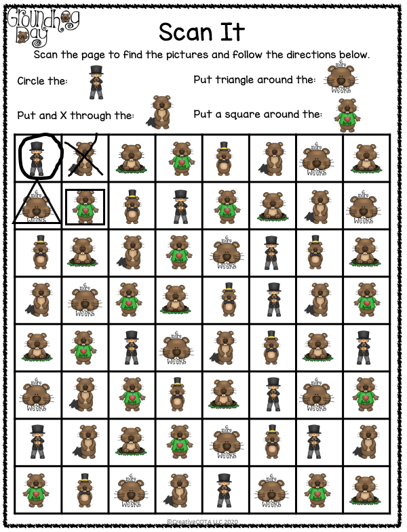
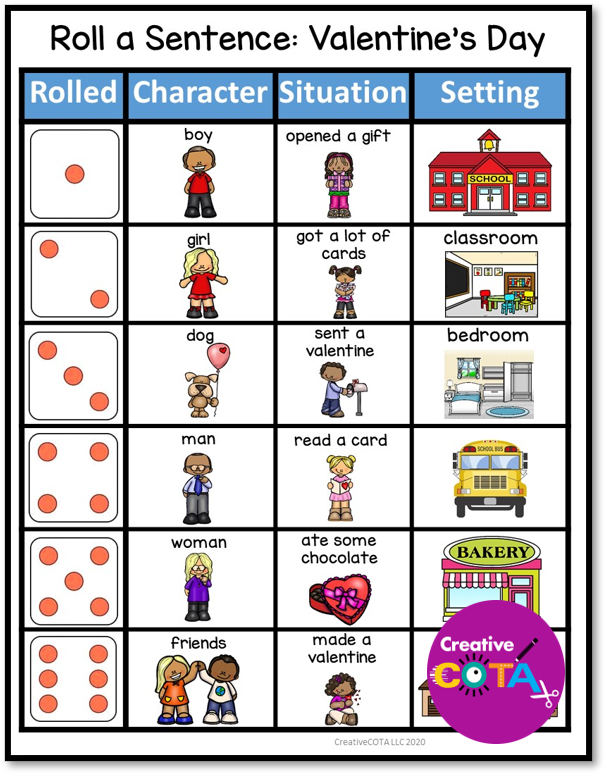
About the Author
I am a Certified Occupational Therapy Assistant (COTA) and have been working in a public school system for more than 25 years. My resources can be found on TPT, BOOM Learning, Made by Teachers, Classful, and Your Therapy Source. I appreciate your interest wherever you wish to shop.
My mission is to help you find creative ideas to incorporate fine motor, visual perception, gross motor, and social-emotional learning into your lessons.
I hope you consider signing up for my Free Resource Library with your Email. I send out emails about once a week and share resources, tips, and planning ideas for your classroom or occupational therapy needs. Hopefully, these help your students work on building their skills in a fun and engaging way.

